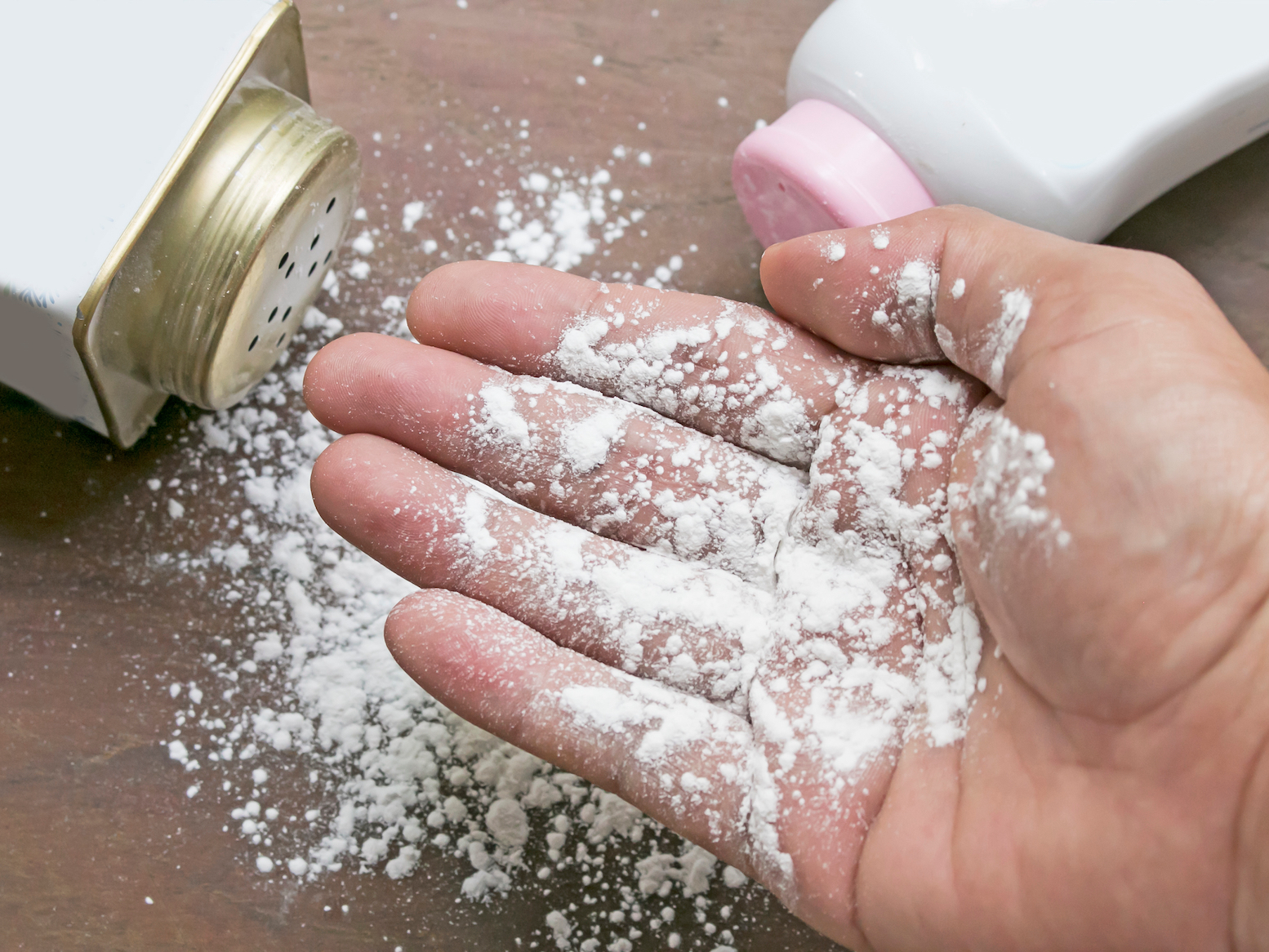TALC
Talc (CAS number: 14807-96-6) is a naturally occurring mineral, consisting of hydrous magnesium silicate and it can contain sometimes small quantities of aluminium silicate. It used in cosmetics and personal care products as an abrasive, absorbent, anticaking, bulking, opacifying and skin protecting agent. According to the European Cosmetics Regulation (EC) No 1223/2009, Talc is included in the list of substances which cosmetic products must not contain except subject to the restrictions laid down (Annex III, entry 59). In the European Union (EU), products containing Talc must have a caution statement to ensure safe use for children under 3 years of age, addressing the potential over-inhalation. The U.S. Food and Drug Administration (FDA) includes Talc (magnesium silicate) on its list of substances Generally Recognized As Safe (GRAS) for use in food as an anticaking agent and it also allows the use of talc as an indirect food additive (colourant in polymers) and as colourant in drugs.
TALC’S SCREENING ASSESSMENT
In Canada, Talc is used in a similar way to the rest of the world, as a food additive, in cosmetic products and in a wide range of other products (e.g. textiles, adhesives and sealants, toys, plastic and rubber materials, etc.). Canada’s Minister of the Environment and Minister of Health have performed a screening assessment of Talc (pursuant to section 74 of the Canadian Environmental Protection Act, 1999 – CEPA).
There were no critical health effects identified via the oral (food intake) or dermal (self-care products) routes of exposure. So, the focus of the screening assessment performed by Health Canada was the perineal and inhalation exposure to certain self-care products containing cosmetic- or pharmaceutical-grade Talc.
Based on studies conducted in rats and mice by the U.S National Toxicology Program (NTP), Talc may induce non-cancer lung effects, such as inflammation, impaired lung function and fibrosis. There is a potential for inhalation exposure to talc powder during the use of some self-care products (cosmetics, natural health products, non-prescription drugs formulated as loose powders, and not as pressed powders).
The experts also considered that, according to available human studies (peer-reviewed literature), there is a “consistent and statistically significant positive association between perineal exposure to talc and ovarian cancer”. The available data are indicative of a casual effect and, since there is a potential for perineal exposure to talc form the use of certain personal care products (such as body or baby powder, diaper and rash creams, genital antiperspirants and deodorants, body wipes, bath bombs, bubble bath), consequently it was concluded that there is a potential human health concern.
Talc is determined to be persistent but it didn’t meet the bioaccumulation criteria (set out in the Persistence and Bioaccumulation Regulations of CEPA) and was considered to be of low risk to harm the environment.
In sum, most of consumer products containing Talc are not of concern to human life or health. But when talking about certain products and its inhalation and perineal exposure, the conclusion obtained by Health Canada in its screening assessment was that Talc “is entering or may enter the environment in a quantity or concentration or under conditions that constitute or may constitute a danger in Canada to human life or health”. Consumers should avoid cosmetic products containing talc in the form of loose powders or which are intended for the genital area.
If you wish to get more information regarding this or other subjects, feel free to contact us at info@criticalcatalyst.com.
References:
- Regulation (EC) No 1223/2009 of the European Parliament and of the Council of 30 November 2009 on cosmetic products – https://ec.europa.eu/health/sites/health/files/endocrine_disruptors/docs/cosmetic_1223_2009_regulation_en.pdf
- Screening Assessment Talc (Mg3H2(SiO3)4). Government of Canada – https://www.canada.ca/en/environment-climate-change/services/evaluating-existing-substances/screening-assessment-talc.html#toc0














